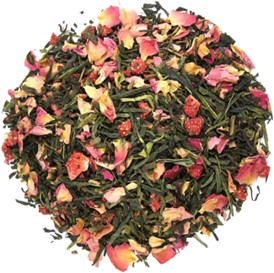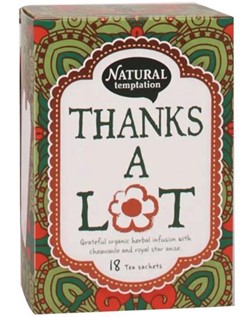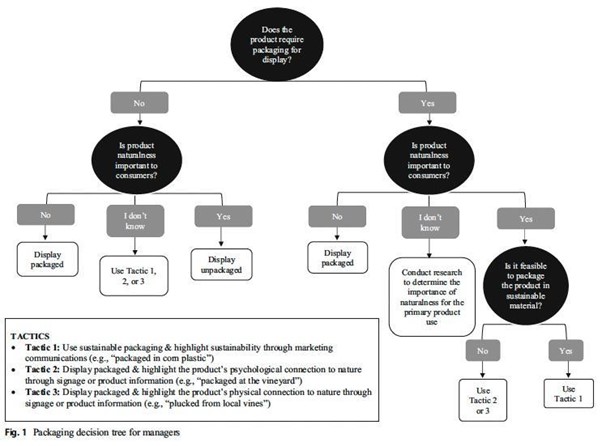Packaging & Naturalness: When and Why Not To Pack Your Products
Relevant topics Research, Archive
Shoppers increasingly consider the naturalness of products. Typically, natural products are preferred in categories in which naturalness is considered important. But what does naturalness have to do with the package of the product? Quite a lot, as it turns out. Let’s look at the images below. Which of the products do you consider to be most natural?


Supermarkets display packaged and unpackaged versions of products across a number of categories in-store and online. Restaurants also display products with and without packaging. Starbucks, for example, instructs its employees to remove bakery items from their individual packages before placing them unpackaged in a display case, only to re-package them for the customer upon purchase. The question is: what effect does this have on consumer preference, and purchase likelihood?
In this blog, we will discuss how packaging food has an effect on perceived naturalness (i.e., originating from plants, animals, or humans) and thereby on purchase intentions. Let’s dive in…
Packed vs. Unpacked
Multiple studies have researched the effect of packaging on consumer behavior. On the one hand, consumers tend to avoid contamination. Shoppers, in this regard, seem to avoid products they believe have been in contact with unsavory objects (Morales & Fitzsimons, 2007) or people (Argo et al., 2006).
On the other hand, in some cases, packaging can contrastingly lead to unfavorable responses. The reason for this is that packaging can function as a physical and symbolic barrier. As the physical proximity of a product to its origin positively affects perceived naturalness, unpackaged goods might elicit feelings of closeness to nature.
A Symbolic Barrier
When dividing spaces, visual boundaries can also serve as symbolic boundaries. Geographical divisions, such as state borders, act as symbolic barriers that visually distinguish two locations into separate categories, or states. As such, the risk associated with a threat in a different state will be lower as compared to an equally distant threat within the same state (Mishra & Mishra, 2010).
Within the domain of marketing, when consumers have concerns about risk, the inclusion of a frame surrounding a logo symbolically safeguards the brand and enhances the intention to make a purchase compared to the absence of a frame (Fajardo et al., 2016).
Similarly, packaging can also serve as a visual and symbolic barrier. For example, the wrappers surrounding individual chocolates inside a box serve not only as a tangible barrier that separates the chocolates but also function as a symbolic barrier to consumption. These wrappers draw attention to the act of consuming and promote careful consideration, increasing the level of deliberation involved in the decision (Cheema & Soman, 2008).
Packaging & Naturalness
Generally, shoppers value products that are physically or psychologically connected to their origin. It is for that matter that shoppers prefer products with low serial numbers, as these items seem temporally more proximal to the origin (Smith et al., 2006). In addition, shoppers typically prefer products that are manufactured at the original factory as compared to any other factory, because the original one is closer to the brand’s origin (Newman & Dhar, 2014).
As packaging may serve as a symbolic barrier separating the product from its origin, packaging can actually decrease the purchase likelihood of a particular product. In a series of 5 experiments, Szocs, Williamson and Mills (2022) show that packaging indeed functions as a symbolic barrier, decreasing the perceived naturalness of the product. As a result, for product categories in which naturalness is important to shoppers, a package decreases the likelihood of purchase.
Natural products contained in packaging lead to less clicks and likes in ads, less positive product evaluations and a decreased purchase likelihood. The key take-away here is that, if within your product’s category, naturalness is important, try to display your product unpackaged.
What if no package is no option?
Of course, no package isn’t always an option. Some products simply need a package in order to be transported. Wine without a bottle isn’t really an option, right?
No worries, the researchers also found three tactics which you can use to attenuate the negative effects of packaging.
First, the use of sustainable packaging and highlighting sustainability through package claims can attenuate the negative effects of packaging. Second, explicitly highlighting the psychological connection to nature through signage or product information helps to keep the association with naturalness. And third, highlighting the physical connection to nature through signage or product information also eliminates the negative effect.

Further Reading
-
A Surprisingly Simple Way To Make Food Packaging More Appealing
In their battle for customer attention, food packaging designers are eager to implement techniques from psychology. It gives them an edge over their competitors in grabbing customer attention and increasing sales.
Especially in the aisles containing your typical vice products, most purchases are unplanned. This leaves a major role for on-pack visuals and claims to determine which products end up in our shopping baskets.
Over the years, consumer psychologists have unearthed many of these design techniques, which are often quite eloquent and subtle, such as:
- Getting the typography right (did you know that round fonts reinforce our perception of sweetness?)
- Cleverly arranging the various visual elements (did you know that bottom-heavy pack designs increases our perception of the amount of product we’ll be getting)
- Using nature’s principles of beauty (did you know that designs following the golden ratio are regarded more beautiful?)
As we focus on ever-more subtle design techniques, we may be overlooking the most powerful weapons of influence that are in front of our faces all along. A recent study by Huang et al., (2022) has thrown the spotlight on one such factors: image size.

